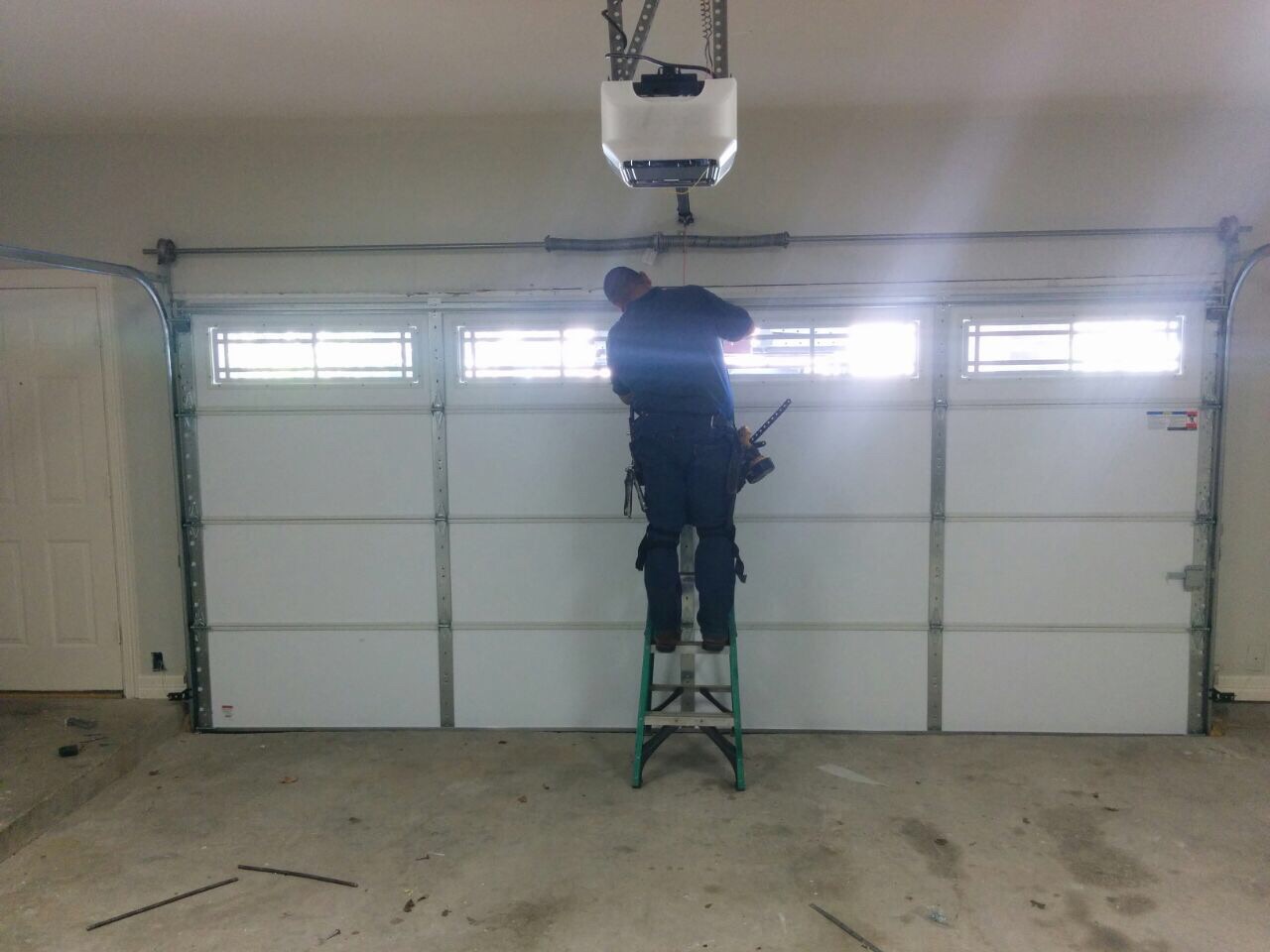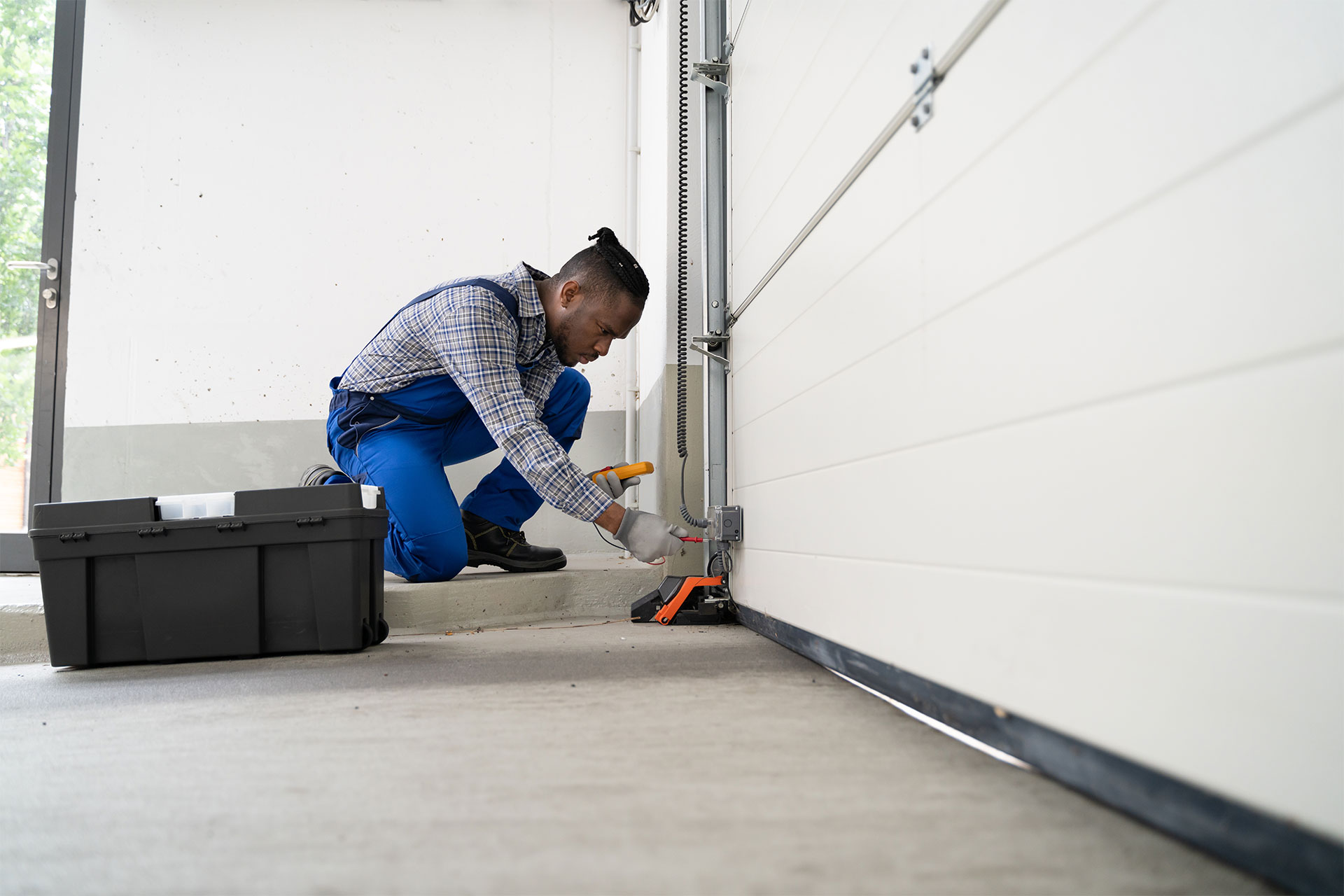Maintaining your garage doors nanaimo based on material type
Maintaining your garage doors nanaimo based on material type
Blog Article
Typical Issues and Solutions for Homeowners With Garage Doors
As a house owner, you could deal with several usual garage door concerns that can disrupt your day-to-day routine. Let's explore the most regular garage door problems and exactly how you can tackle them effectively.
Malfunctioning Garage Door Openers
When your garage door opener starts acting up, it can be aggravating, especially if you rely on it daily. You might discover that it doesn't react to your remote or the door opens up and shuts unpredictably. If that's not the problem, examine the opener's power resource.
If you still experience concerns, seek any indications of wear on the equipments or electric motor. A defective opener may require lubrication or even a replacement part. Do not think twice to consult your user handbook for repairing pointers certain to your design, or think about calling a specialist if the trouble continues. Taking these steps can aid recover your garage door's capability in no time.
Misaligned Garage Door Tracks
If your garage door isn't opening or closing efficiently, misaligned tracks may be the wrongdoer. Common reasons consist of damage or accidental bumps that disrupt the alignment. Luckily, taking care of these track concerns can recover your door's feature and maintain it running securely.
Reasons of Misalignment
Misalignment of garage door tracks can occur for a number of factors, often resulting in irritating functional concerns. One common cause is regular wear and tear; in time, screws and bolts can loosen, triggering the tracks to move. If your garage door obtains bumped or struck, that effect can misalign the tracks. Furthermore, modifications in temperature level and moisture can trigger the metal tracks to broaden or contract, resulting in misalignment. Dirt and debris accumulation can also block the tracks, pressing them misplaced. Improper installation can lead to relentless placement issues. Determining these causes can help you recognize why your garage door isn't operating efficiently.
Repairing Track Issues
Dealing with track concerns with misaligned garage doors requires a careful technique to guarantee smooth procedure. Initially, inspect the tracks for bends or particles that may block motion. Use a degree to check if the tracks are right; if not, delicately tap them back right into positioning with a rubber club. Next, validate the brackets holding the tracks are limited; loose screws can create misalignment. If the tracks are greatly harmed, consider changing them. As soon as lined up, lubricate the tracks with a silicone-based spray to minimize rubbing. Test the garage door's operation to validate it opens and shuts efficiently. Routine upkeep will assist protect against future track issues and maintain your garage door functioning appropriately.
Broken Springs
When your garage door instantly refuses to open or close, it's typically because of broken springtimes. These springtimes bear the weight of the door, making it easy for you to raise or lower it. If they snap, you'll observe that your door really feels hefty or will not budge at all.
To verify the problem, aesthetically evaluate the springtimes for voids or breaks. If you suspect they're broken, don't attempt to fix them yourself, as they're under high tension and can cause injury. Instead, call a professional who can safely replace the springs.
Regular maintenance can help avoid spring failure, so watch on their condition and lubricate them periodically. If you're experiencing frequent spring troubles, consider updating to higher-quality springtimes that can hold up against even more damage. This aggressive technique can conserve you time and money in the long run, ensuring your garage door operates efficiently.
Noisy Garage Doors
After resolving concerns like damaged springs, you might notice another usual trouble: noisy garage doors. If your garage door squeaks, rattles, or moans, it can be fairly aggravating, specifically if it's interrupting your peace. The noise often originates from damaged rollers, loose equipment, or absence of lubrication.
Begin by inspecting the rollers and joints. If they're filthy or damaged, cleaning or changing them can significantly reduce sound. Next off, check for loosened bolts or screws; tightening them can eliminate rattling audios. Don't neglect to lube the moving get rid of a silicone-based spray or garage door lube. This will aid lessen friction and sound.
If your door still seems like a dinosaur, think about getting in touch with an expert. Regular upkeep can prevent loud garage doors and lengthen their life expectancy, guaranteeing you delight in a quieter, smoother procedure.
Garage Door Remote Issues
Lots of home owners experience disappointment with garage door remote concerns at some factor. Replace them and see if that resolves the trouble. Consult your garage door opener guidebook for specific directions. garage doors nanaimo.
Occasionally, disturbance from other electronics can impact your remote. Look for any nearby gadgets that could be triggering a signal disturbance. If that does not help, check the remote for physical damages, like splits or busted buttons.
An additional typical problem is range; you may just be as well far from the garage door. They can diagnose and fix any underlying troubles with your garage door system.
Weather Condition Stripping Problems
If you observe drafts, water leakages, or enhanced power expenses, your garage door's weather removing could be worn out. Recognizing how to detect indications of wear and knowing installment suggestions can aid you preserve a proper seal - garage doors nanaimo. When it's time for a substitute, you'll have a lot of choices to choose from
Indications of Wear
As you utilize your garage door over time, the climate stripping can begin to show indications of wear, which is necessary to resolve. Search for voids or helpful site fractures in the rubber or vinyl product; these can allow drafts, dust, and dampness. If you discover the removing is brittle or tearing away from the door, it's time to take action. You may additionally find that your garage door does not secure correctly, bring about enhanced power costs or insect troubles. Frequently evaluate the weather stripping to capture these concerns early. If you see significant damage, changing the climate removing can help preserve your garage's performance and shield your valuables from the components. Do not ignore these indications-- act immediately!
Setup Tips
When you see use on your garage door's weather removing, resolving the installment can make a considerable distinction. Verify you have the appropriate type of weather removing for your garage door. By paying focus to these information, you'll improve your garage door's insulation and protect your home from the components.
Replacement Options
While you might have installed your garage door's weather stripping correctly, damage can still result in problems that require substitute. If you notice drafts, dampness, or insects entering your garage, it's time to ponder brand-new weather stripping. Try to find choices like vinyl or rubber products, which give better insulation and longevity. Measure your door's dimensions precisely to guarantee an appropriate fit, and choose self-adhesive strips for very easy setup. If you choose a more durable solution, think regarding working with a specialist to install a brand-new threshold seal. Frequently inspecting and replacing climate stripping not only enhances your garage's energy efficiency however additionally safeguards it from damages. Do not wait up until you encounter larger concerns-- act currently!
Sensing Unit Breakdowns

Beginning by checking the sensing unit alignment. Make certain both sensors deal with each other and are level.
If the sensing units show up intact yet the door still won't shut, it might be time to change them. With a little more information troubleshooting, you can typically solve sensing unit concerns and obtain your garage door working efficiently once again.
Often Asked Questions
Just how Frequently Should I Keep My Garage Door System?
You need to keep your garage door system at least two times a year. Routine checks for wear, lubrication of relocating parts, and changing the tracks can maintain it functioning smoothly and prolong its life-span significantly.
Can I Set Up a Garage Door Myself?
Yes, you can mount a garage door yourself, but it calls for cautious planning and the right tools. Make certain you follow the manufacturer's instructions very closely and take into consideration security precautions to prevent crashes during setup.
What Is the Average Lifespan of a Garage Door?
The standard lifespan of a garage door is usually 15 to thirty years, relying on materials and upkeep. If you care for it well, you can maximize its longevity and delight in dependable performance.

Exactly how Do I Choose the Right Garage Door?
When you choose the ideal resource garage door, take into consideration products, design, and insulation. Consider your home's architecture, spending plan, and upkeep demands. Do not forget to examine neighborhood regulations and energy effectiveness ratings for optimal performance.
Exist Energy-Efficient Garage Door Options Available?
Yes, there are energy-efficient garage door choices readily available. You can pick insulated doors, which aid maintain your garage's temperature, or search for models with a high R-value to improve power performance and minimize power expenses.
Report this page